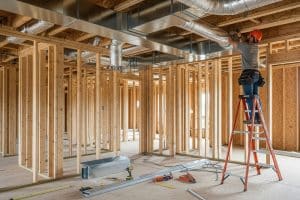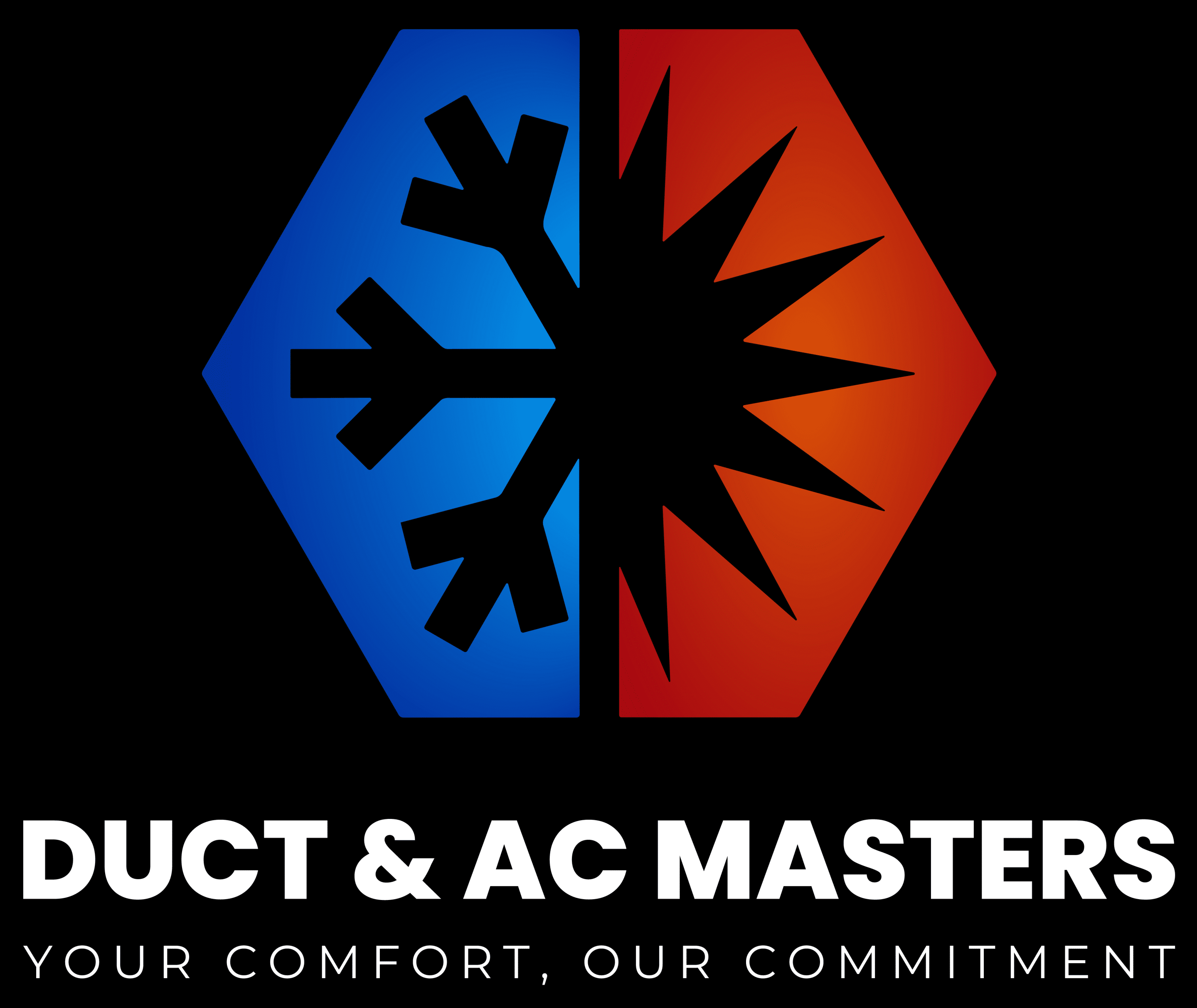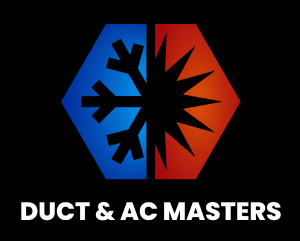 Ductwork installation is a critical aspect of any HVAC system, serving as the pathway for conditioned air to flow throughout your home. Properly installed ductwork not only enhances comfort but also significantly improves energy efficiency. In this guide, we will explore the entire ductwork installation process, its importance, and the benefits of having a well-designed duct system.
Ductwork installation is a critical aspect of any HVAC system, serving as the pathway for conditioned air to flow throughout your home. Properly installed ductwork not only enhances comfort but also significantly improves energy efficiency. In this guide, we will explore the entire ductwork installation process, its importance, and the benefits of having a well-designed duct system.
Understanding Ductwork and Its Importance
Ductwork is the network of tubes that distributes heated or cooled air from your HVAC system to various rooms in your home. The efficiency of your HVAC system largely depends on the quality of the ductwork. When designed and installed correctly, ductwork ensures that air is evenly distributed, maintaining consistent temperatures and improving indoor air quality.
The Role of Ductwork in HVAC Systems
-
- Air Distribution: Ducts are responsible for delivering conditioned air to every corner of your home. Properly sized and sealed ducts prevent hot or cold spots, ensuring comfort in all rooms.
- Energy Efficiency: Well-installed ductwork minimizes air leaks, which can lead to significant energy loss. This efficiency translates into lower utility bills and a reduced carbon footprint.
- Indoor Air Quality: Ducts that are clean and well-maintained help filter out dust, allergens, and pollutants, contributing to a healthier living environment.
The Ductwork Installation Process
Installing ductwork involves several key steps, each crucial for ensuring optimal performance. Understanding this process can help homeowners appreciate the importance of professional installation.
Step 1: Initial Assessment and Planning
Before any installation begins, a thorough assessment of your home is essential. This involves evaluating the existing HVAC system, measuring room sizes, and determining airflow requirements.
-
- Load Calculations: HVAC professionals perform calculations to determine the heating and cooling needs of your home. This data informs the design of the duct system.
- Duct Layout Design: A detailed plan is created, mapping out the most efficient routes for duct placement. This layout considers the locations of supply and return vents to ensure balanced airflow.
Step 2: Material Selection
Choosing the right materials for ductwork is vital for durability and efficiency. Common materials include:
-
- Sheet Metal: Known for its strength and longevity, sheet metal is often used for main trunk lines. It provides smooth airflow and is easy to maintain.
- Flexible Ducts: These are versatile and can navigate around obstacles easily. However, they require careful installation to avoid airflow restrictions.
- Fiberglass Duct Board: This option combines insulation with structural strength, reducing energy loss and condensation.
Step 3: Installation of Main Trunk Lines
The main trunk line is the primary duct that carries conditioned air from the HVAC unit to branch ducts. Proper installation of this line is crucial for system efficiency.
-
- Routing: Technicians carefully route the trunk line along the planned path, ensuring it is adequately supported and clear of obstructions.
- Sealing Connections: Tight-fitting connections are essential to minimize air leaks. Professionals use high-quality sealants to ensure durability.
Step 4: Branch Duct Installation
Branch ducts connect the main trunk line to individual rooms. This step requires precision to maintain proper airflow.
-
- Sizing and Slope: Each branch duct must be appropriately sized and sloped to facilitate optimal airflow. This prevents restrictions that could hinder system performance.
- Avoiding Obstacles: Technicians must navigate around electrical, plumbing, and structural elements to ensure a clean installation.
Step 5: Vent Installation
Supply and return vents are critical for air circulation. Proper placement ensures even temperature distribution.
-
- Cutting Openings: Technicians cut precise openings for vents and secure them with appropriate fasteners.
- Connecting to Ductwork: Vents are connected to the duct system with sealed joints to prevent air leaks.
Step 6: Sealing and Insulating Ducts
Sealing and insulating ducts is essential for maintaining energy efficiency.
-
- Sealing Techniques: Professionals use mastic sealants and metal tape to seal all joints and connections, preventing air loss.
- Insulation: Insulating ducts, especially those in unconditioned spaces, helps maintain temperature control and reduces energy consumption.
Step 7: System Testing and Balancing
After installation, thorough testing ensures the system operates efficiently.
-
- Airflow Measurement: Technicians measure airflow at each vent to verify that the system is balanced and functioning correctly.
- Adjustments: Dampers and registers are adjusted to achieve optimal airflow throughout the home.
Benefits of Proper Ductwork Installation
Investing in quality ductwork installation yields numerous benefits that enhance comfort and efficiency.
Enhanced Comfort
A well-designed duct system ensures that every room in your home receives the right amount of conditioned air. This leads to:
-
- Consistent Temperatures: Proper airflow prevents hot and cold spots, maintaining a comfortable environment throughout your home.
- Reduced Noise: Well-sealed ducts minimize noise from the HVAC system, creating a quieter living space.
Improved Energy Efficiency
Efficient ductwork can significantly reduce energy consumption, leading to lower utility bills.
-
- Minimized Air Leaks: Proper sealing prevents conditioned air from escaping, allowing your HVAC system to operate more efficiently.
- Lower Operating Costs: With reduced energy usage, homeowners can expect lower monthly bills and a more sustainable home.
Better Indoor Air Quality
Clean and well-maintained ductwork contributes to healthier indoor air.
-
- Reduced Allergens: Sealed ducts prevent dust and allergens from circulating, improving air quality for occupants.
- Enhanced Ventilation: Properly designed duct systems facilitate better ventilation, removing indoor pollutants effectively.
Extended HVAC System Lifespan
A well-functioning duct system reduces strain on your HVAC equipment, leading to:
-
- Less Wear and Tear: Efficient airflow minimizes the workload on your system, extending its lifespan.
- Fewer Repairs: Regular maintenance and proper installation reduce the likelihood of costly repairs.
Common Issues with Poor Ductwork Installation
While proper installation offers numerous benefits, poorly designed or installed ductwork can lead to significant problems.
Air Leaks
Even small leaks can cause substantial energy loss, leading to:
-
- Increased Energy Bills: Air escaping through leaks forces your HVAC system to work harder, raising utility costs.
- Inconsistent Temperatures: Leaks can create hot and cold spots, making it difficult to maintain a comfortable environment.
Improper Sizing
Ducts that are too small or too large can hinder system performance.
-
- Restricted Airflow: Undersized ducts can limit airflow, causing the system to overwork and potentially leading to breakdowns.
- Wasted Energy: Oversized ducts may result in inefficient airflow, wasting energy and increasing costs.
Poor Insulation
Inadequately insulated ducts can lead to energy loss and condensation issues.
-
- Temperature Loss: Uninsulated ducts in unconditioned spaces can lose heat or cool air, reducing system efficiency.
- Condensation Problems: Insufficient insulation can lead to condensation, promoting mold growth and other issues.
Maintenance Tips for Ductwork
To ensure your ductwork continues to perform optimally, regular maintenance is essential.
Routine Inspections
Scheduling annual inspections with qualified technicians can help identify potential issues before they escalate.
-
- Check for Leaks: Technicians can detect and seal any leaks, ensuring efficient airflow.
- Inspect Insulation: Regular checks can identify areas where insulation may be lacking or damaged.
Cleaning Ducts
Periodic cleaning of your ductwork helps maintain indoor air quality.
-
- Remove Contaminants: Professional cleaning removes dust, allergens, and other pollutants that can accumulate over time.
- Improve Airflow: Clean ducts facilitate better airflow, enhancing system efficiency.
Filter Maintenance
Regularly changing air filters is crucial for maintaining airflow and system performance.
-
- Prevent Blockages: Dirty filters can restrict airflow, forcing your HVAC system to work harder.
- Enhance Air Quality: Clean filters help trap dust and allergens, improving indoor air quality.
When to Consider Ductwork Replacement
There are several signs that indicate it may be time to replace your ductwork.
Age of Ductwork
Most duct systems have a lifespan of 20 to 30 years. If your ducts are approaching this age, consider an evaluation.
-
- Deterioration: Older ducts may develop leaks or become damaged, reducing efficiency.
- Increased Energy Bills: Rising utility costs can indicate that your ductwork is no longer functioning effectively.
Poor Air Quality
If you notice an increase in dust, allergens, or unpleasant odors, it may be time to assess your duct system.
-
- Allergy Symptoms: Increased allergy symptoms among occupants can signal that your ducts are harboring contaminants.
- Unpleasant Odors: Musty or foul smells can indicate mold growth or other issues within the ductwork.
Inconsistent Temperatures
If certain rooms in your home are consistently too hot or too cold, it may be a sign of ductwork problems.
-
- Hot and Cold Spots: Uneven temperatures can indicate leaks or improper sizing in your duct system.
- HVAC System Strain: If your HVAC system is struggling to maintain consistent temperatures, it may be time for a duct evaluation.
Ductwork installation is a vital component of any HVAC system, directly impacting comfort, energy efficiency, and indoor air quality. By understanding the installation process and the benefits of proper ductwork, homeowners can make informed decisions about their HVAC systems. Regular maintenance and timely replacements can ensure that your ductwork continues to perform optimally, providing a comfortable and healthy living environment for years to come.
We Provide Duct Work Installation, Repair, & Maintenance
Professional duct work installation, repair, and maintenance are crucial services in South Florida’s unique climate, where high humidity and temperature fluctuations place significant demands on HVAC systems. Properly installed ductwork creates an efficient network that distributes conditioned air throughout your home, while strategic placement of supply registers and return air grilles ensures balanced airflow essential for managing Florida’s intense heat.
> Learn More
Contact Us (954-324-1406) for a Free Consultation!
—
 About Duct and AC Masters
About Duct and AC Masters
Duct and AC Masters is South Florida’s premier solution for all your air system needs. Our certified professionals, competitive pricing, and commitment to customer satisfaction ensure that your HVAC system performs at its best.

 About Duct and AC Masters
About Duct and AC Masters